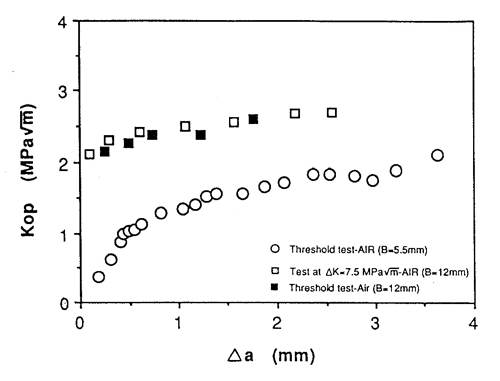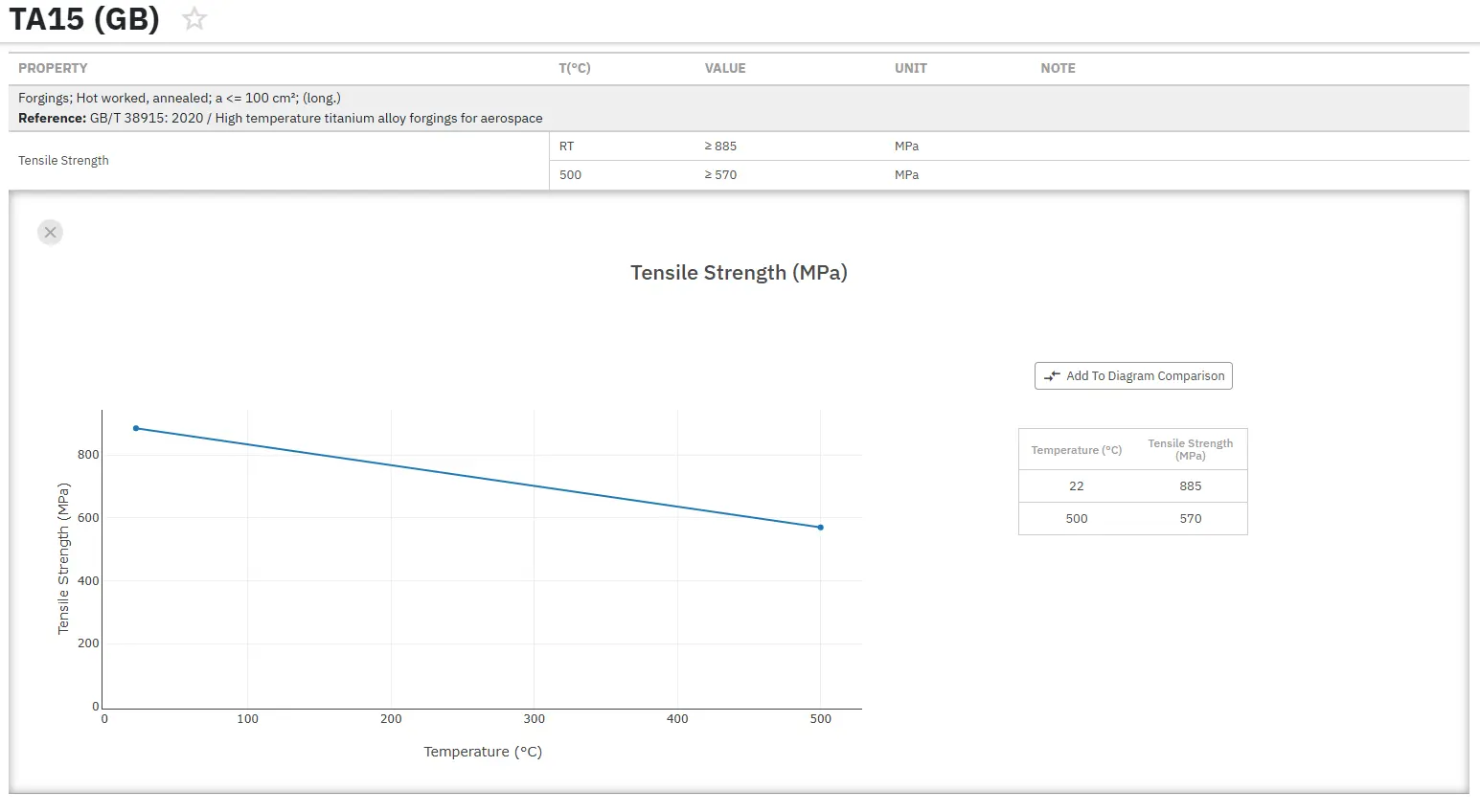Effect of Environment on the Cracks Behavior in TA6V Alloy
Abstract
To get more information on the fatigue behavior of Ti-alloys, the growth of long cracks and of physically short bidimensional cracks has been studied on a TA6V alloy.
This article presents some results obtained on the influence of the crack wake on the propagation of fatigue cracks in specimens tested in ambient air and in high vacuum.
Few researches have been carried out on the influence of environment on the fatigue propagation of short cracks apart from those specific ally related to the so called corrosive environments. Previous studies on 7075 aluminum alloys and a construction steel have shown that the initial growth of short cracks occurs at a much lower stress intensity range (AK) in an active environment (ambient air or nitrogen containing traces of water vapor) than in vacuum. However, Gerdes have shown that there is no significant difference in the initial stress level in air and in vacuum for small surface cracks initiated in a Ti-8.6 Al alloy.
Moreover, crack closure is known to play a dominant role in influencing near threshold growth rates. Through the removal of material from the wake of long crack arrested at threshold, several authors have studied the location and the origin of crack closure. It has been concluded that the behavior of short and long bidimensional cracks can be rationalized in terms of the effective stress intensity factor range for Al alloys and steels.
To get more information on the fatigue behavior of Ti-alloys, the growth of long cracks and of physically short bidimensional cracks has been studied on a TA6V alloy. This article presents some results obtained on the influence of the crack wake on the propagation of fatigue cracks in specimens tested in ambient air and in high vacuum.
The material used for this investigation was a forged Ti-6AI-4V alloy (wt % 6.27 Al, 3.86 V, 0.12 Fe, 0.18 O2). After forging the alloy was heat treated at 955°C for 1 h 30 min. and water quenched, followed by 2 h at 700°C and air-cooling.
Fatigue crack propagation tests were carried out under ambient air and high vacuum (< 5.104 Pa) on CT specimens 5 or 12 mm thick and 24 mm wide, at a test frequency of 35 Hz and a load ratio R = 0.1. Crack advance was optically monitored and crack closure was detected by mean of the compliance technique with a back face strain gauge.
A long crack was first obtained at a/w ~0.5 using a load shedding procedure down to threshold or at constant ΔK. Then the plastic wake of the crack was progressively removed by spark erosion to obtain a crack length about 0.1 mm. Then the bidimensional short through cracks were propagated at increasing ΔK.
Near threshold propagation of long cracks
The relationship between the propagation rate da/dN and the nominal (ΔK) and the effective (ΔKeff) stress intensity factor ranges are plotted for tests performed in ambient air at R = 0.1 and 35 Hz on the Ti 6AI-4V alloy. Decreasing the specimen thickness from 12 to 5.5 mm lowers the nominal threshold range but does not affect the effective threshold range (ΔKeff)th. Consequently the thinner specimen corresponds to a lower Kop level.

The 5.5 thick specimens were tested in air and in high vacuum. A strong detrimental influence of the ambient environment on the resistance to crack propagation at low rates can be observed. The effective data confirm that the ΔKeff concept cannot account for the influence of environment.
Consequently, the crack growth mechanism in moist ambient air (about 50% R.H.) must be different from the intrinsic mechanism governing crack propagation in vacuum. Similar behaviors have previously been observed on Al-alloys and steels, for which materials an embrittling effect of water vapor adsorbed at the crack tip has been proposed. A similar mechanism could be suggested for Ti-alloys.
Crack closure location to analyze the location of crack closure, the crack wake was progressively removed and Kop measurements were performed at each step of this procedure.
The evolution of Kop versus the remaining crack length Δa is plotted for cracks pregrown at threshold ambient air on 5.5 mm and 12 mm thick specimens. The lowering of Kop at decreasing Δa is more pronounced on the thinner specimen. At Δa ~0.1 mm no closure was detected on the 5.5 mm thick specimen while a substantial remaining closure effect was measured with the thicker specimen. The length, along which the decrease in Kop was observed, i.e. where crack closure is localized, is about 1.5 mm for the thinner specimen thickness and 0.7 mm for the thicker one.
A complementary test on a 12 mm thick specimen was performed at a constant ΔK of 7.5 MpaV/m corresponding to a constant growth rate about 3x10-9 m/cycle. Removing the crack wake did not affect Kop except when Δa is 0.1 mm.
The same measurements were made on cracks pregrown at threshold in vacuum. It was seen that, as in air, Kop is lower for the smaller thickness but it is independent of Δa. Similar observations have been made on a construction steel type E460.
As a consequence of these observations, it appears that the short crack effect (defined as the decrease in Kop with Δa) depends upon the embrittling effect of environment for cracks pregrown near threshold in air. However, for the crack pregrown at a constant rate of 3x10-9 m/cycle, Kop is, as in vacuum, independent of Δa, which suggests that this embrittling effect in air occurs only at ultra low rates. But an environmental influence is also observed at rates higher than 10-9 m/cycle. This suggests the existence of two distinct regimes in environmentally assisted crack growth. Similar behaviors have been observed on Al-alloys and steels.
Short crack propagation
The short cracks here obtained on 5.5 mm specimens were propagated at increasing ΔK. In vacuum, there was no difference between long and short cracks, which was consistent with the independence of Kop upon Δa. Initially, the short crack grew for about 0.3 mm at ultra low rates (about 3 to 6x10-11 m/cycle) without any detectable closure. There after, there was an abrupt acceleration of the crack rate and crack closure was detected; and then progressively, a behavior similar to the one of a long crack was reached for a crack length about 1 mm.
The effective data confirm the existence of a typical near threshold mechanism without closure, which is different from the mechanism governing the propagation above 2x10-10 m/cycle. The microfractographic aspects of the fracture surfaces show that, compared to vacuum, the fades in air appear more brittle with crystallographic facets corresponding to a grains and lamellae. This crystallographic aspect is more developed at ultra low rates. On going experiments will hopefully give new information, which may permit a deeper analysis of these crack growth mechanisms.
The main conclusions of the present study on short cracks obtained artificially from long cracks in a TA6V alloy are:
- The following conditions are required to obtain a short crack effect:
- a pregrown long crack near threshold in air
- removal of crack wake.
- Under such condition a propagation regime typical of ultra low rates, without detectable closure, is observed for short cracks grown in ambient air.
- No short crack effect is observed in other studied conditions, i.e.:
- short cracks obtained from long crack pregrown in air at a constant rate of 3 x 10-9 m/cycle (AK = 7.5 MPa/m);
- short cracks in vacuum.
チタン合金の正確な特性を今すぐチェック!
Total Materia Horizon には、数千種類のチタン合金の組成、温度別の機械的・物理的特性、非線形特性などが収録されています。

Total Materia Horizonの無料テストアカウントを開設して、120カ国以上、50万人を超えるユーザーのコミュニティに参加しましょう!